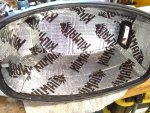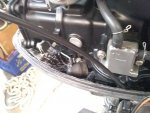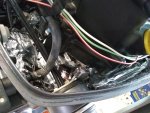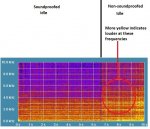Picked up another NSF6A2 yesterday and while working on it (needed carb cleaning and impeller), got a wild hair idea about seeing if I could make it quieter. I have a similar motor we use on the dingy and when putting around the marina it's louder than some of the other folks (who are mostly running 2 cylinders).
So I have some sheets of some "dynamat-like" material and started playing with it. Ended up lining the inside of the engine cowling and the inside of the pan under the powerhead. I'll run it on the lake this weekend to see what the results are like. Anyone else try something like this?
So I have some sheets of some "dynamat-like" material and started playing with it. Ended up lining the inside of the engine cowling and the inside of the pan under the powerhead. I'll run it on the lake this weekend to see what the results are like. Anyone else try something like this?
Attachments
Last edited:

























